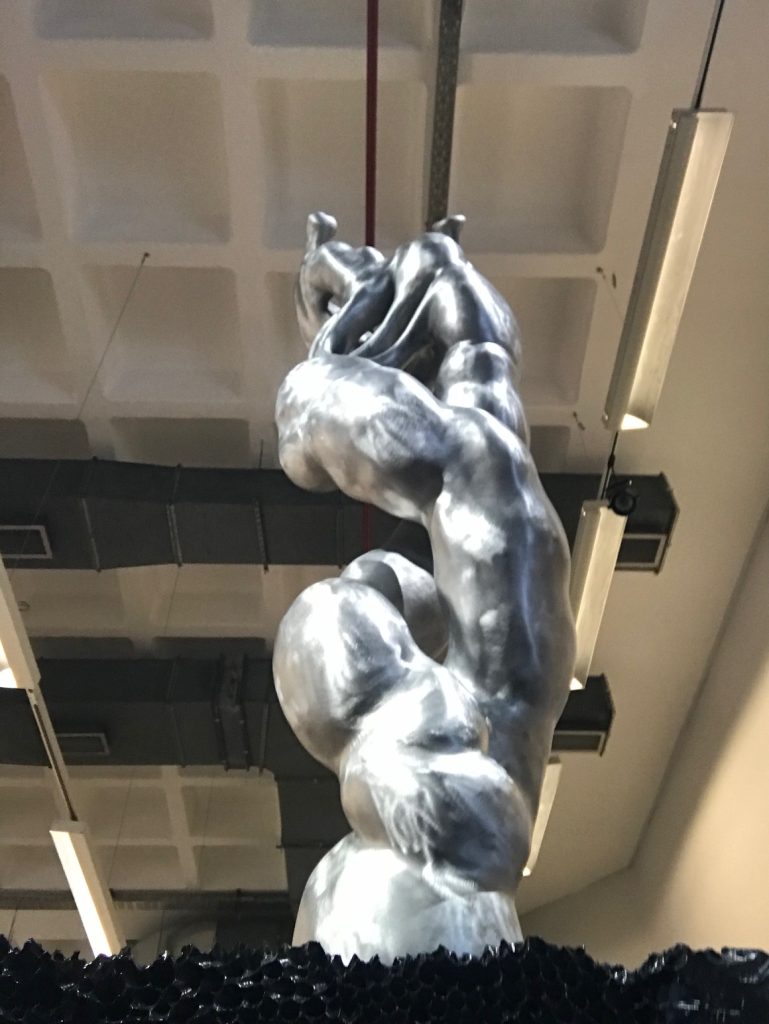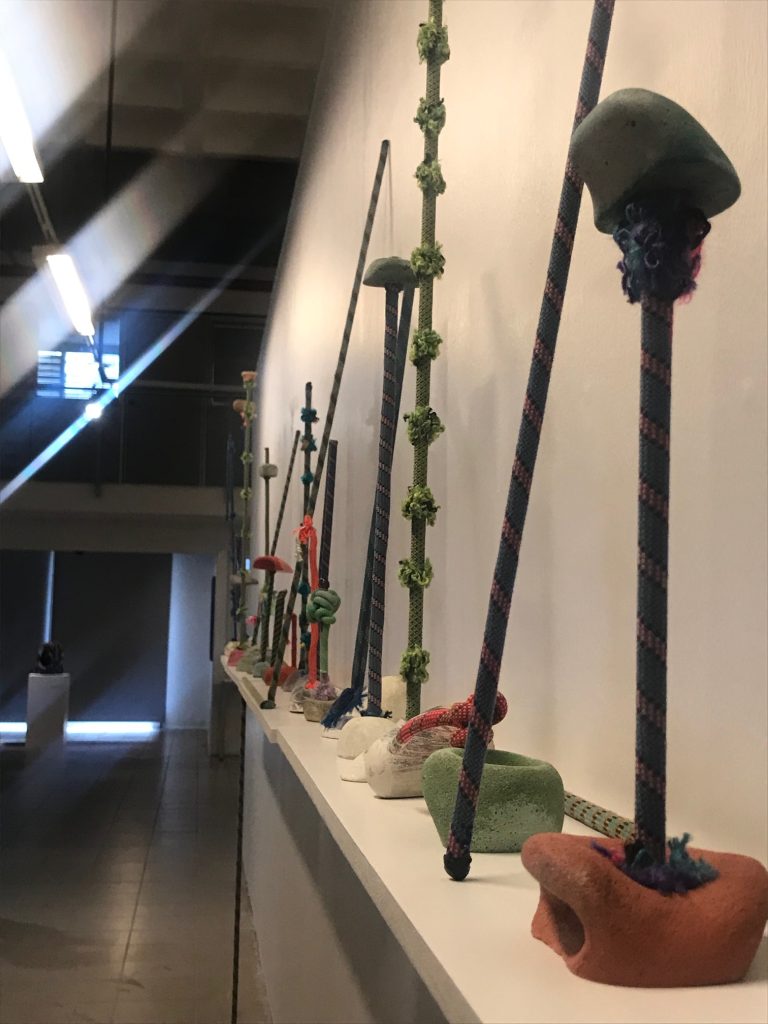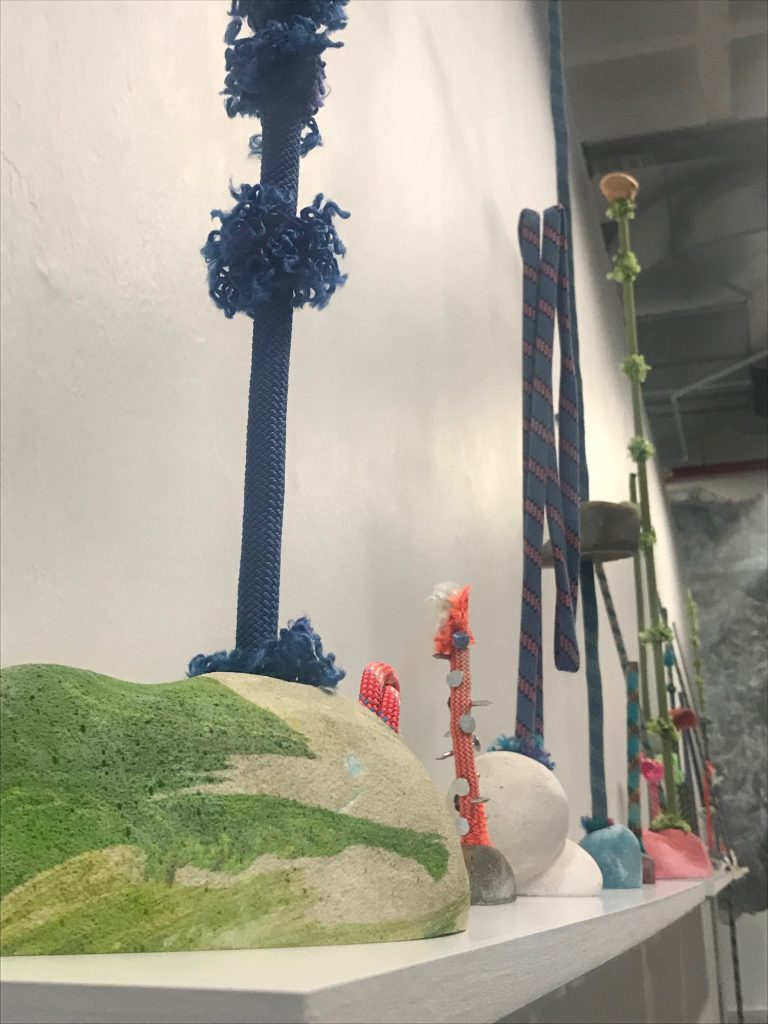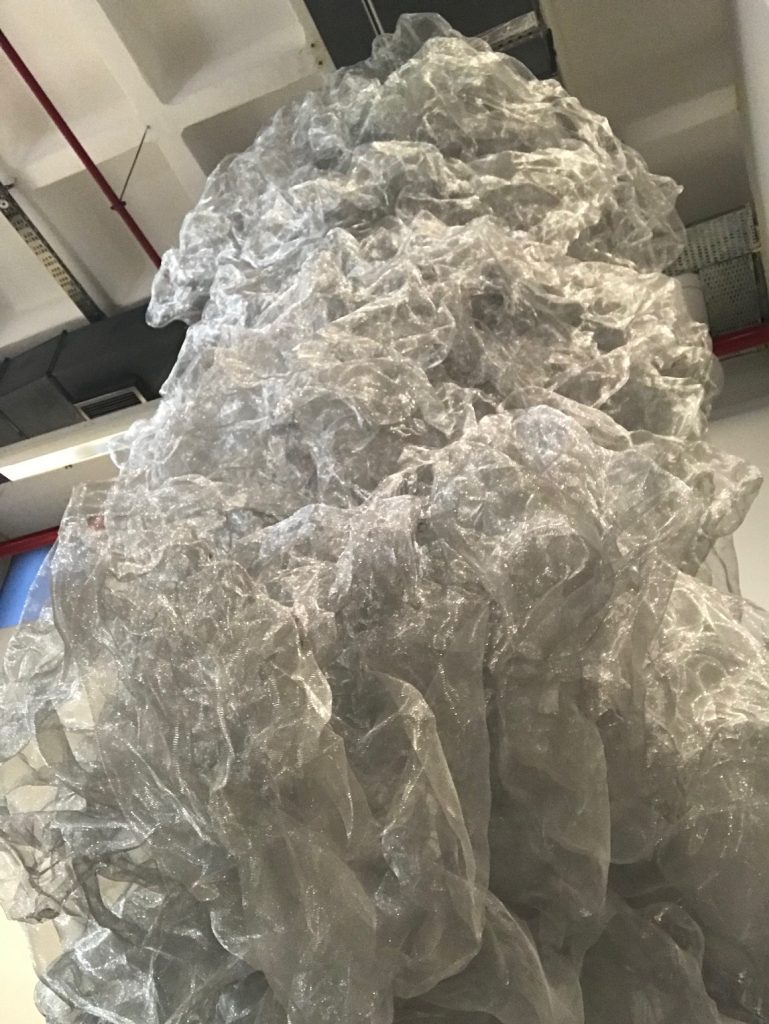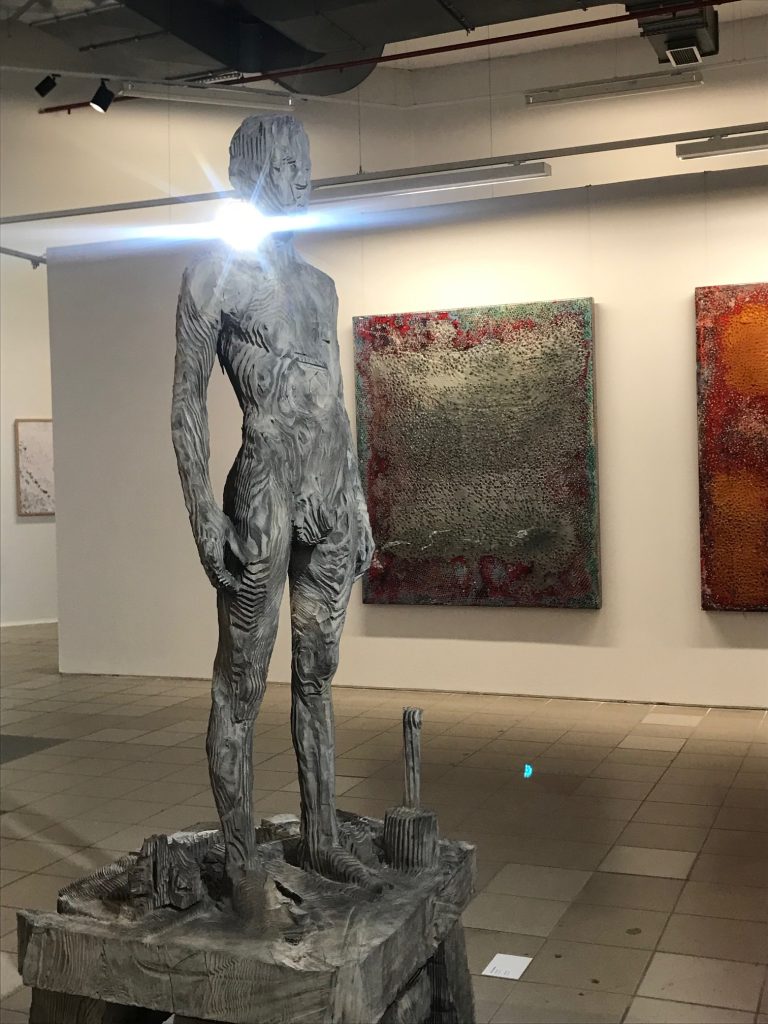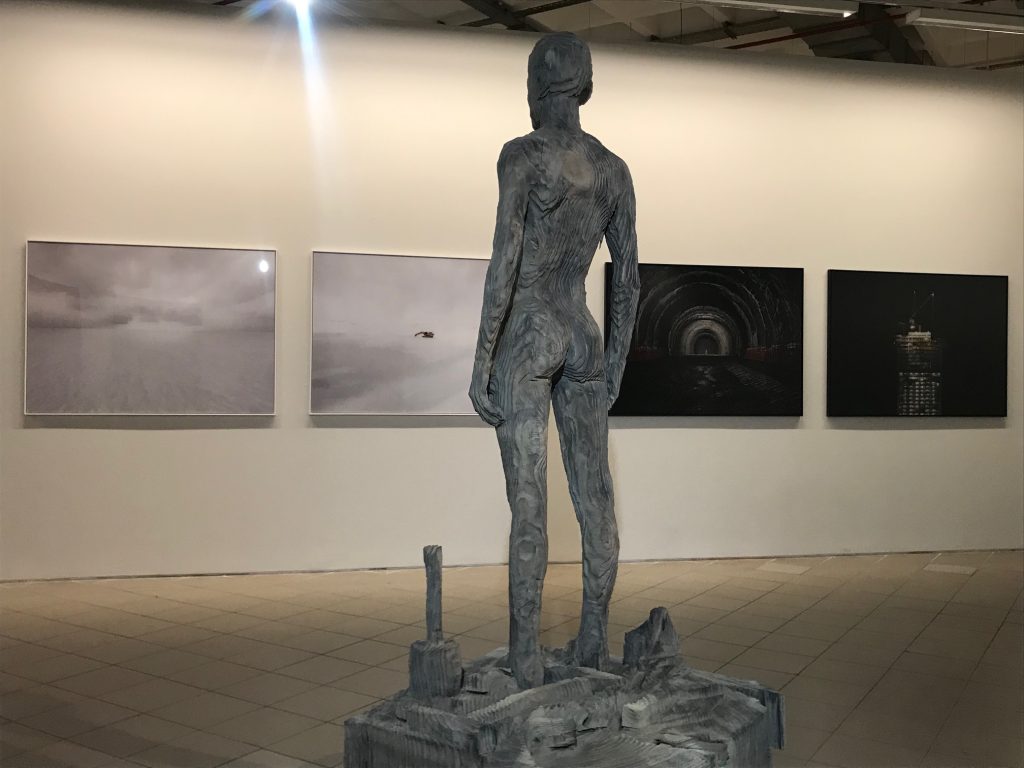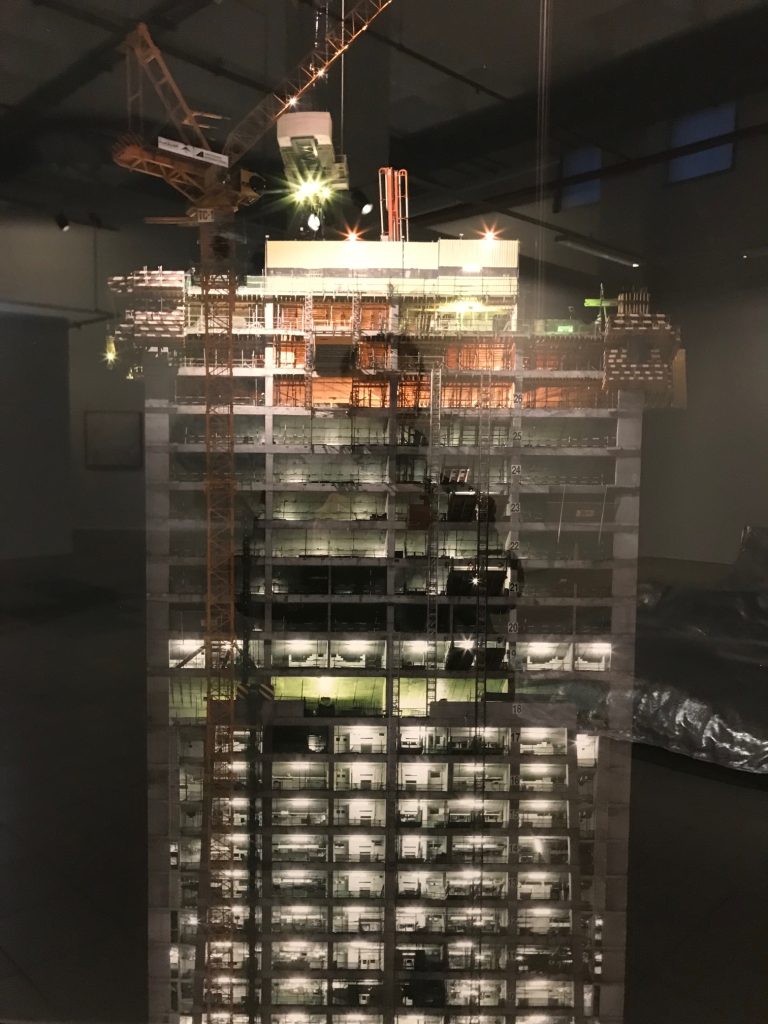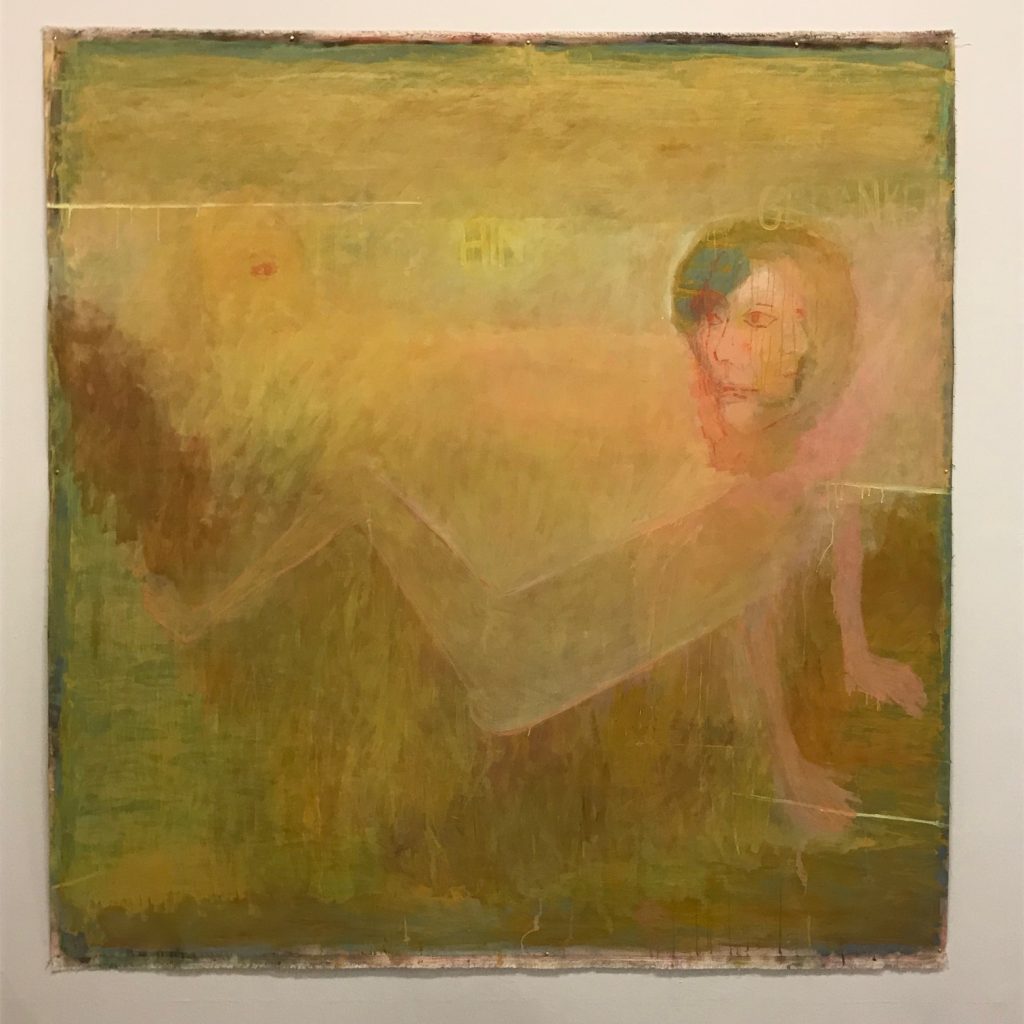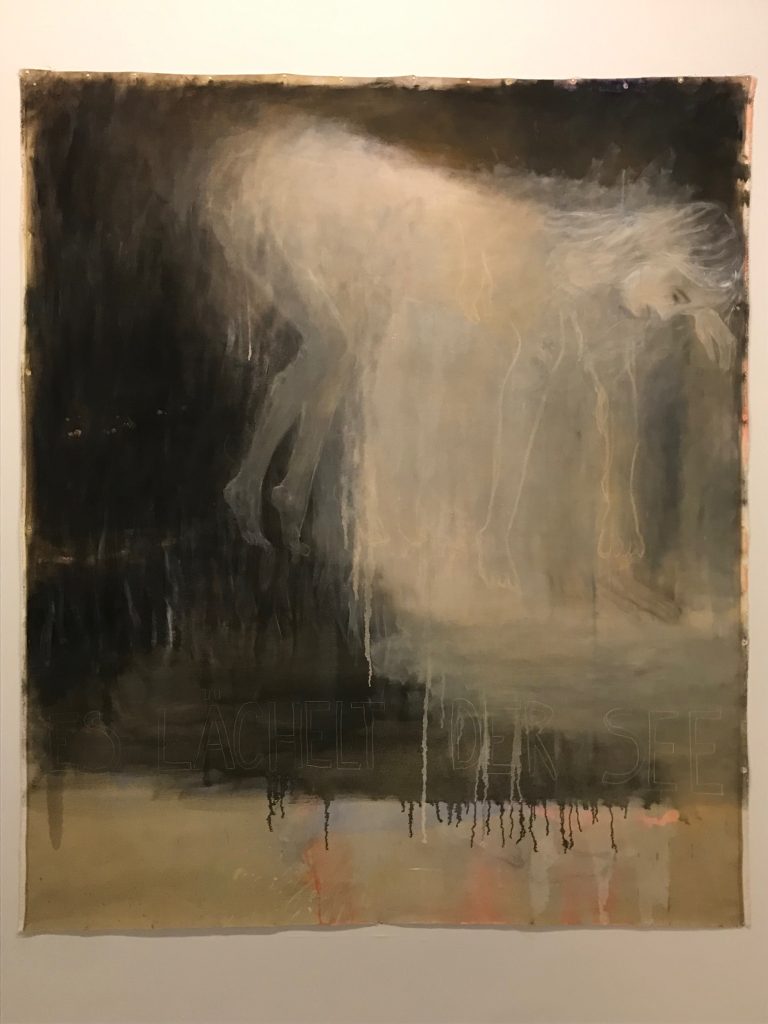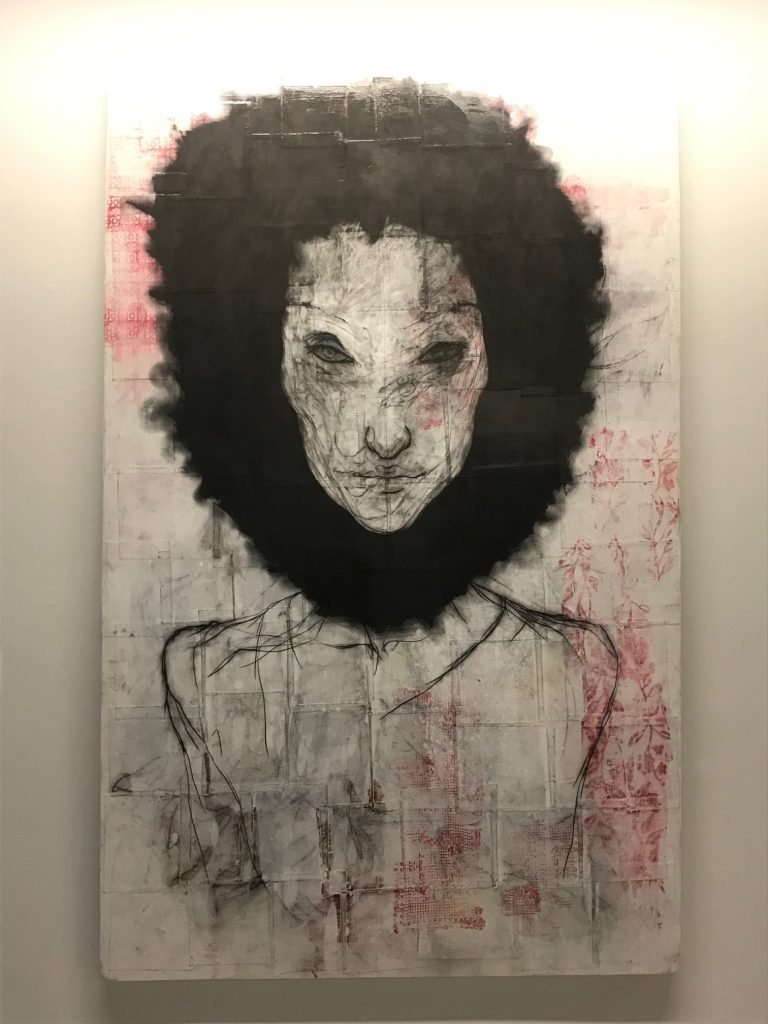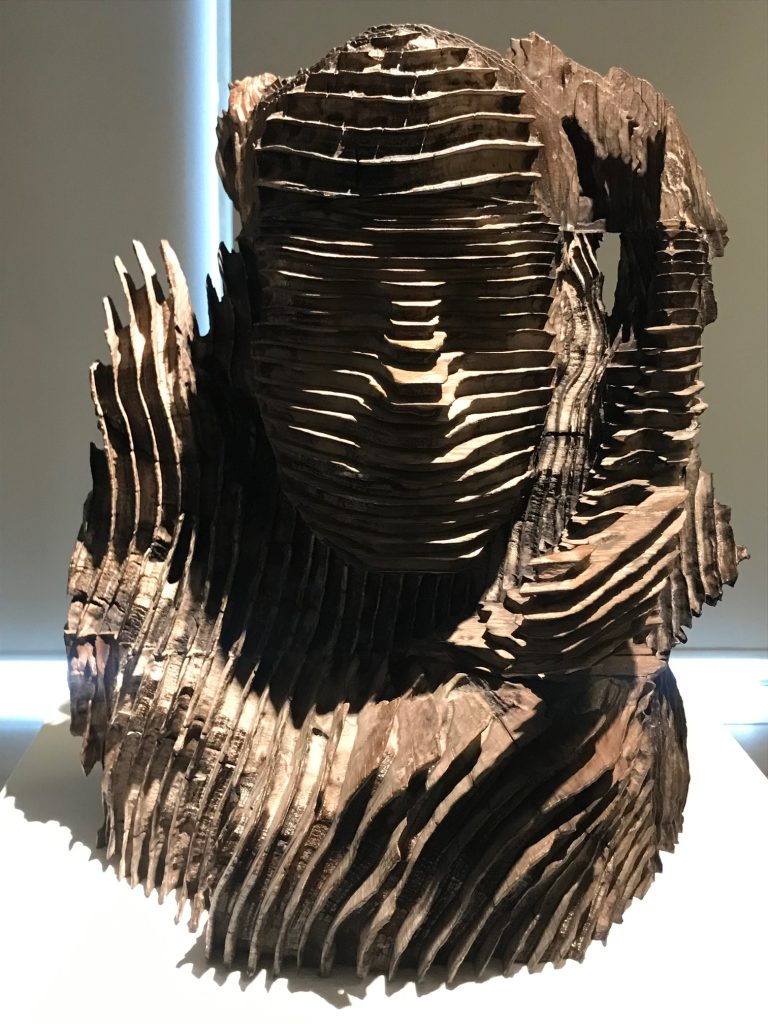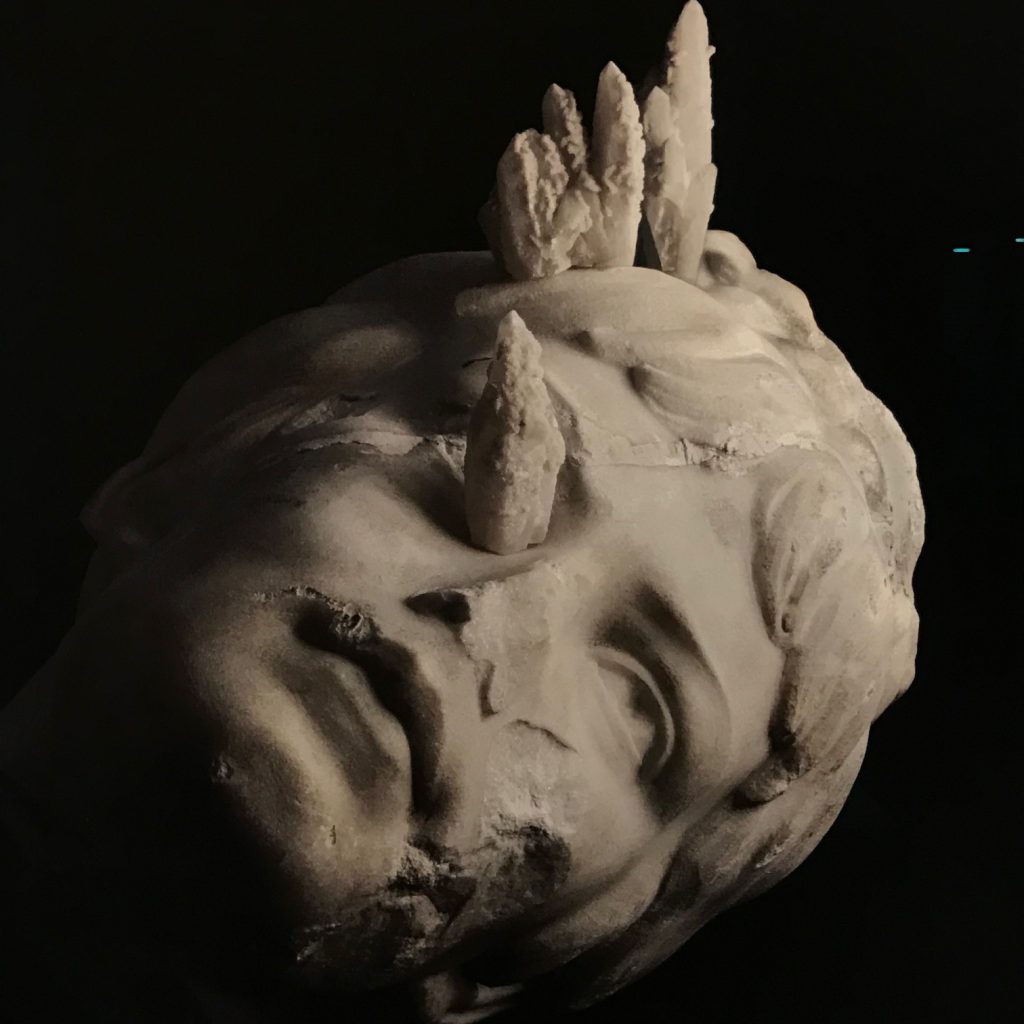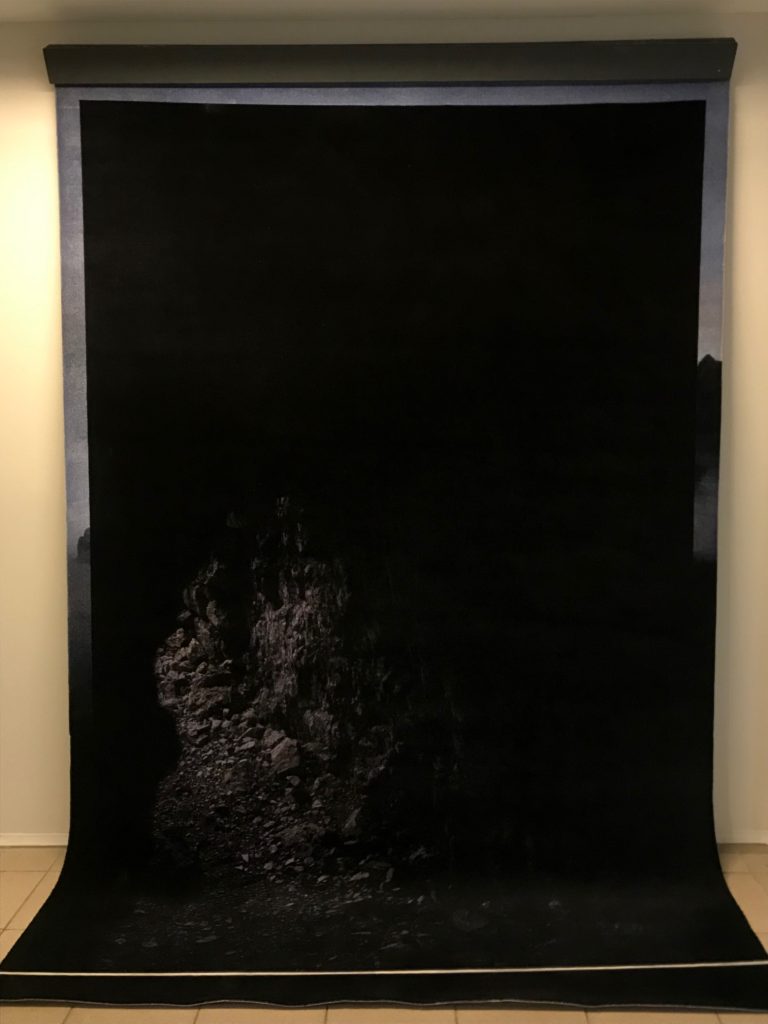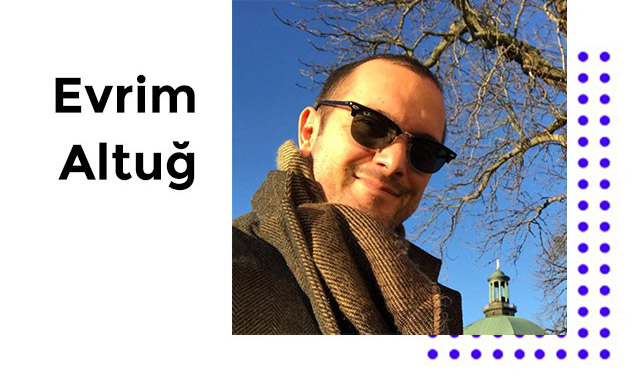
“Where the Sea Once Was” exhibition, on display at the Elgiz Museum until May 4, highlights the regional sensitivity and solidarity of 11 Italian artists, showcasing the diversity of their art and the justified pluralism in the language of criticism. The artists in the exhibition, through their work, offer a universal coherence that speaks to active roots, sensitivity, and openness to action, ensuring their enduring impact.
Established 23 years ago in Istanbul by Can and Sevda Elgiz as Türkiye’s first private contemporary art museum, the Elgiz Museum has garnered numerous awards in its field. Continuing on its path toward the future, the museum is guided by Ayda Elgiz Gureli, a passionate art enthusiast and founding member of the institution. The museum’s international exhibition, running until May 4, delves into art’s sensitive and multifaceted reflection on the earth’s transformation over billions of years.
The event, initially held at Ankara CerModern in early September last year under the title “Where the Sea Once Was,” was hosted by Mr. Giorgio Marrapodi, the Ambassador of Italy to Ankara, and led by Zihni Tumer until October. This time, the event was hosted in Istanbul. The opening in Ankara was also attended by the Deputy Minister of the Ministry of Foreign Affairs of the Republic of Türkiye, Head of the EU, Ambassador Kemal Bozay, as well as Alexander Zoeggeler, Director of the Südtiroler Künstlerbund Association, which provided support for the exhibition, and many other guests.
Indeed, this exhibition marks yet another endeavor by the Elgiz Museum to delve into the relationship between nature and humanity. In March 2022, the Elgiz Museum presented “Nature, Gardens, Fantasies,” an exhibition in collaboration with the Arkas Collection, which examined the intricate relationship between nature and humanity.
In return, with this art protocol, which brought the Arkas collection to Istanbul for the fourth time, a selection from the Elgiz Collection with the theme “Myths and Dreams” was hosted at the Arkas Art Center in Izmir from March 26, 2022, with the signatures of Project Director Mujde Unustasi and curator Jean-Luc Maeso. Collector Lucien Arkas, Chairman of Arkas Holding, expressed the following in his press statement: “Nature has consistently served as a profound wellspring of inspiration for art across history. Works of artists regarding nature are as old as art itself, which is why this relationship between art and nature has always fascinated me.”

This international exhibition, which now brings together the works of 11 artists at the Elgiz Museum under the subtitle “Traces of the Past, Dreams of the Future”, was curated by Austrian art historian Dr. Lisa Trockner. Trockner also serves as the director of the Südtiroler Künstlerbund, also known as South Tyrolean Artists’ Association (GTSB), established in 1946 in Bolzano, Italy, which unites over 300 artists spanning three generations.
A Public Forum: GTSB
Describing itself as a public forum where artists come together, the initiative is heavily focused on fostering new talent. With its in-house art gallery Prisma, the GTSB prioritizes project-based collaborations with local and transnational galleries and institutions across various disciplines such as visual arts, architecture, literature, and composition.
In his press statement, Director Dr. Trockner stated that the main element of the exhibition at the Elgiz Museum is the Dolomites region of the Italian Alps, which borders Austria and Switzerland. The exhibition reveals the evolution of the region, which was home to the Tethys Sea 250 million years ago, from 20 million years ago to the present. Trockner summarizes the formation of the region as follows:

“The Italian Alps began to form the Dolomites mountain landscape, which then has existed for about 20 million years and has been a UNESCO World Heritage Site since 2009. As the sea began to recede, the first rivers made their way through and the valleys took shape. What were once coral reefs have been pushed over by a great force. That force compressed, bent and sculpted the coral reefs. What’s left are steep rock formations rising to the sky like towers of pink shades. They contained fossils and giant shells which testified to the past.”
Glimpses that Recycle the Future
Sponsored by the Italian Embassy and the Italian Cultural Center, the event welcomes the audience with a detailed presentation of the exhibition. The first piece that stands out in the guest exhibition, juxtaposed with the Elgiz Museum’s contemporary art collection, is “New Nature 14,” an abstract sculpture crafted by Bolzano-based artist Peter Senoner. The sculpture is made from satin aluminum material and is presented courtesy of the Alessandro Casciaro Art Gallery. Finding its balance point with light and dark colors, “New Nature 14” becomes a micro- and macro-scaled, chillingly beautiful specimen of observation and criticism that approaches with awareness the flirtation of creation and destruction of both science and nature; in a way, both organic and artificial intelligence. The artist’s piece, characterized as intermittent and anchored in the infinity of a tar-black pedestal, takes on an aesthetic significance with its silvery “dullness.” It serves as a poignant reminder that despite human efforts, the power struggle between humanity and nature ultimately defies resolution.

Resisting the War of Selfishness Against Nature
“Where the Sea Once Was” is an exhibition brimming with cultural and aesthetic expressions depicting humanity’s selfish conflict against nature fueled by greed and a ‘colonialist conquest disease’, particularly evident in the past two centuries. Continuing our tour, we encounter Arnold Mario Dall’O’s diptych artwork titled “Untitled – Red / Blue Flowers” from 2021, which we are viewing with the gallery’s authorization.
The oil on paper, skillfully applied to the panel, commands attention with its size and aesthetics reminiscent of the ‘Pop Art’ era of contemporary art history. Born in Italy in 1960 and based in Merano, the artist captivates viewers both volumetrically and psycho-optically, emphasizing the element of ‘artificial beauty’ in his work through intricate detailing.
As we approach these immense, stunning flowers, depicted in a state of both tranquility and tension in the blue and red artworks, it becomes evident that they evoke a fascination tinged with a longing for nature, offering a blend of utopian and dystopian perspectives simultaneously. Thus, the artwork embodies a polite yet resoundingly authentic and critical essence, speaking to the snares of the ‘image’ prevalent in today’s consumer society. It underscores our responsibility for uncovering the truth in every aspect, particularly given our constant interaction with new digital technologies.
Modern Art Language with Climbing Ropes
Another captivating installation in the exhibition is the 25th installment of the “Climbing Ropes” series by Hubert Kostner, born in 1971 and residing in Casteloretto. This particular piece was created between 2020 and 2022. In his work, Kostner combines used climbing ropes, climbing footholds, threaded rods, fittings, wooden and iron nails with different types of evolved rock grains collected from the region, in thematic connection with the Dolomites, which is also the core of the exhibition. This work, which hints at abstract painting compositions from modern art history, underscores the potential reconciliation and coexistence between humanity and nature. It leaves a lasting impression with its varied experiences and paradigms offered to the viewer.
Similarly, artist Robert Pan, born in 1969, explores this dichotomy through his monumental three-piece triptych resin abstraction pigment work created between 2019 and 2022. This piece is featured in the exhibition curated by Dr. Trockner at the Elgiz Museum. The works, laden with the gigantic appeal of color and texture, feed the climate of doubt generated by the exhibition with their critical tensions between nature and man, observation and finding, document and memory.

Doubts Over ‘Civilized’ Mankind
Aron Demetz, one of the artists embracing doubt in the exhibition with his own aesthetics, offers a transitional perspective. He explores the geological character of the Dolomites, juxtaposing it with the contradiction of human beings’ temporary and permanent existence. A nude figure, uncertain of where or why he gazes, stands level with his pedestal, a hammer at his feet, prompting us to contemplate a choice between primal instincts and supposed civilization when confronted with nature, and how these two aspects are interconnected. Demetz is also represented in the exhibition by another naturalistic wood abstraction, influenced by sandblasting, evoking the classical notion of a bust.
Two digital photographs adjacent to these works in the museum encapsulate the drama of Renaissance painting and the unyielding aesthetic identity of post-modern art. Born in 1975 and living and working in Vienna and Brunicio, Sissa Micheli’s ” Museum’s Rhapsody: Tears of the Past”, Sissa Micheli’s visual compositions, with all their charisma and ephemeral beauty, manage to discuss the dilemma of whether it is life or death that is worth discovering and displaying.
Stitches Cast with Mountain Fragments
“Mountain Fragments – Reflecting History,” another work by the same artist categorized as a ‘unique piece’, also warrants mention. The ‘art carpet’ piece from 2020, subtitled ‘Tunnel Plätzwiese’, captivates with its striking arrangement and promises unique moments by revealing extraordinary sensations hidden within the ordinary.
Gustav Willeit, born in 1975, is the creator of a series comprising four photographic sets where these two figures confront each other. The artist, residing and working in the Alta Badia region of Italy, brings his impressions from Iceland, Italy, and the United Arab Emirates (UAE) to the Elgiz Museum. The works spanning 2014-2024 continue to explore the duality of black and white. The first two pieces, captured in Italy and Iceland, feature a digging operator positioned at the distant center of the frame, battling against the expansive Arctic white. The series’ other visuals, based in the UAE, offer visitors ‘counter-memorial’ evidence of humanity’s struggle for ownership over nature.

‘Helpless Infinity’ with Emergency Blanket
Another installation that enhances this sentiment in the exhibition, achieving a balance between majesty, fragility, beauty, and eeriness simultaneously, is by Wil-ma Kammerer, an artist born in 1959 who resides and works in two different regions in Italy. Titled “Bright White” and dated 2023, this piece utilizes a silver emergency blanket as its material. The artist, utilizing the ventilation effect as a perpetual mood and a dynamic canvas, merits being quoted in full on this occasion: “Kammerer serves as a constant reminder of fragility. The structure of the foil used as an emergency rescue blanket resembles water or ice. Rescue foil is often used to rescue people, but in the Alps it is also used to protect glaciers from melting. A desperate attempt to save ourselves from our own failure.”
Another eye-catching installation-sculpture covers this polyphonic landscape at the Elgiz Museum: Born in 1963 and residing in both Italy and Germany, Julia Bornefeld presents her 2023 work titled “Volaj II.” This piece is a feminine and formal celebration of the millions of years of geological history of the Dolomites, manifested as a 70-meter long, thin metallic material mosquito net. Interestingly, the work also evokes contemporary ‘man-made disasters’, such as wars and the stark smoke towers they generate, amplifying its impact on the viewer through the chilling lightness of its size.
What Naked Jumping Towers See
Winner of the 2013 “ARCO Madrid A International Collection” Award and the 2014 (CAGSAV) Contemporary Arts Foundation Honorary Award, Christine Gallmetzer is a founding member of the Global Private Museum Network and a member of the International Council of Museums (ICOM). The small and large oil canvases dated 2023, which lend their title to this exhibition at the Elgiz Museum, “Where the Sea Once Was,” are the creations of Christine Gallmetzer.
The artist’s graphic compositions, which depict diving towers designed for professional swimming as if they were human abstractions against the backdrop of the blue sky, embody a dystopian visual elegy to the relationship between humanity and nature. These works, central to the exhibition’s theme, evoke the solitude, naked majesty, and desolation of the towers. The profound uncertainty surrounding the destination becomes the ‘intellectual fuel’ of the imagination in both compositions, sparking striking doubt.

Barbara Tavella, one of the contemporary representatives of painting, enriches the exhibition with two canvases. In “The Smiling Lake” from 2015 and “The Meadow Behind Thoughts” from 2018, through these abstract expressionist works, the artist views art as a means to intimately connect with nature, fostering a sense of unity and empathy with the natural world. The artist’s works are notable for a palette and fluidity that celebrate the inception of life and the shared metamorphosis between plants and animals since the dawn of creation.
Another artist who embraces this stylistic approach with a congenial consensus is Peter Senoner, born in 1970 and also residing in Italy. However, he engages with the viewer (and the agenda) in a slightly more critical manner with his work titled “Portrait of Circus Corpus,” dating from 2022 to 2023. The magnetic and organic structure of this uncanny entity, crafted from graphite, pigments, and linen paint on beech wood, primarily in black and white, along with its integrated and enduring character, particularly the gravity of its questioning gaze, are among its most powerful attributes. In the curator’s words, Senoner “…captures this moment of mutation, presenting a curved aluminum object reminiscent of the petrified coral fossils in the Dolomite mountains, which still impart their pink color. The drawing depicts an evolved hybrid creature, with the sketched lines indicating a stage of genetic recombination.”
The exhibition “Where the Sea Once Was” at the Elgiz Museum is poised to be remembered for the regional sensitivity and spirit of solidarity showcased by the 11 Italian artists, as well as for the diversity of their art. Their collective work demonstrates a universal coherence through justified pluralism in the language of criticism, promising a sensitive, action-oriented approach rooted in activism.
Info: elgizmuseum.org




